Have you ever wondered about the difference between Balinese and Siamese cats? They look very similar, so it can sometimes be hard to tell them apart.
However, we are about to delve into the differences between these two breeds. After reading this article, you will be able to tell the difference between the Balinese and Siamese cats, knowing more about the characteristics of these two breeds that make them unique.
If you’re planning on adding one of these cats to your family, it’s particularly important that you know the differences between them. This way, you can be sure to make the right choice for the cat and your home!
Comparing Balinese vs. Siamese Cat
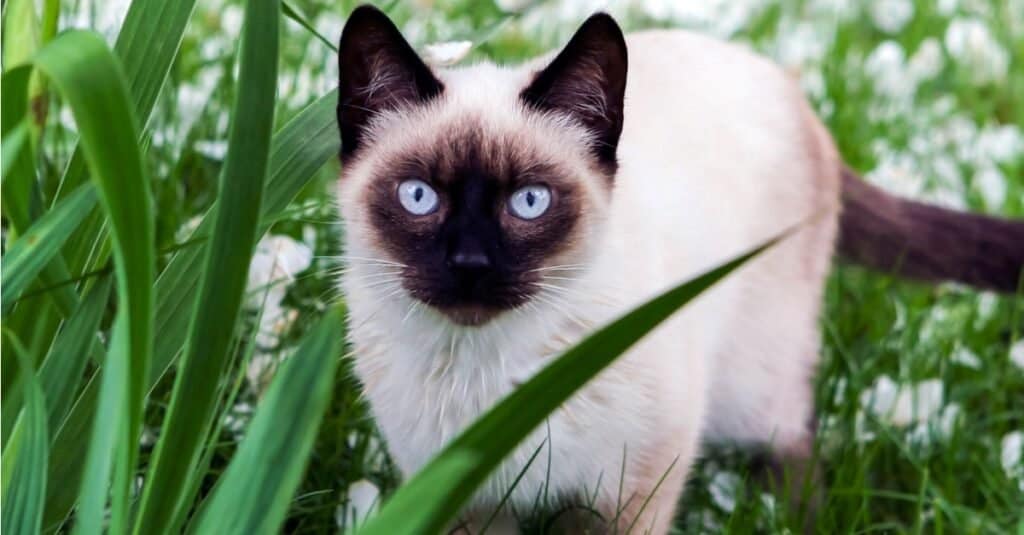
Balinese and Siamese cats are very close relatives who ended up going down slightly different genetic paths due to breeding.
©iStock.com/Vital Hil
| Balinese Cat | Siamese Cat | |
| Size | 12 to 18 inches long; 6-12 pounds | 15-20 inches long; 6-14 pounds |
| Appearance | Long, silky fur that can be up to 2 inches long. Very pronounced color points and patterns, especially on the face. Long and lean bodies, triangular heads, slender legs, long tails with plumes. | Short fur. Very pronounced color points and patterns, especially on the face. Long and lean bodies, triangular heads, slender legs, long tails. Old-Style Siamese cats have round bodies, apple-shaped heads, thicker legs, shorter tails, and smaller ears. |
| Ancestry | Originated in the United States, were first bred in the 1950s and 1960s. | Originated in Thailand at some point. |
| Behavior | Very loving and affectionate. Vocal, but somewhat quieter than a Siamese cat. Prone to causing destruction around the home if not properly mentally stimulated. Likely to be friendly towards everyone. | Very loving and affectionate. Extremely vocal, particularly when left alone. Needs a lot of stimulation in order to prevent destruction in the home. Always wanting attention, although they tend to be picky about who they become attached to. Generally slow to warm up to strangers. |
| Health | Overall healthy, but are somewhat likely to develop certain health issues, including heart disease, liver disease, gum disease, lymphoma, respiratory issues, neurological issues, and eye problems such as progressive retinal atrophy. | Overall healthy, but can be prone to many health issues, including heart disease, liver disease, gum disease, lymphoma, respiratory issues, neurological issues, and eye problems. Old-Style Siamese cats do not tend to have any of these issues. |
| Lifespan | 10-16 years | 12-20 years |
Balinese vs. Siamese Cat: Key Differences

The Balinese and Siamese cats of today have a common ancestor, which is why they are so similar.
©iStock.com/Axel Bueckert
There are many more similarities than differences when comparing the Balinese vs. Siamese cat. The biggest difference is that Balinese cats have longer hair. In fact, the Balinese cats of today are the progeny of Siamese cats in the past that had a genetic mutation that caused them to have longer hair.
The Balinese cat is slightly smaller, and it has a slightly shorter lifespan when compared to the Siamese cat.
Both of these breeds are very affectionate, vocal, and intelligent. However, the Balinese cat is probably a little bit quieter and friendlier on average.
Want to learn more about the differences between these two feline breeds? Let’s dive n!
Balinese vs. Siamese Cat: Size
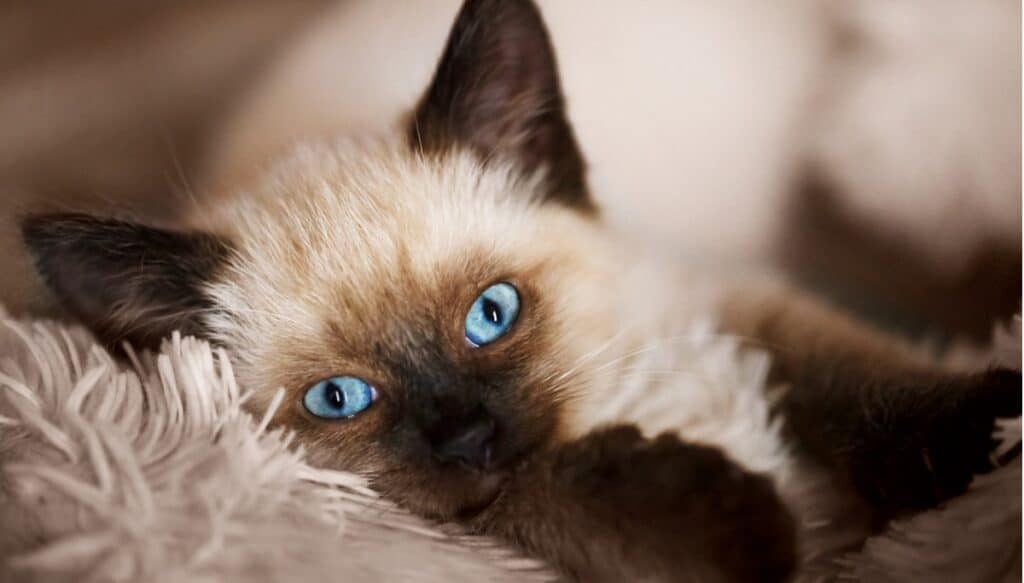
The Balinese cat is slightly shorter and lighter than the Siamese cat on average.
©iStock.com/Oksana Osypenko
On average, Siamese cats are slightly longer and heavier than Balinese cats. Balinese cats are about 12 to 18 inches long, while Siamese cats are usually 15 to 20 inches long. While Balinese cats typically weigh 6 to 12 pounds, Siamese cats typically weigh 6 to 14 pounds.
Balinese vs. Siamese Cat: Appearance

Balinese cats are very similar to Siamese cats when it comes to body shape and coloring, but they have longer hair and plumed tails, unlike their Siamese counterparts.
©iStock.com/Yura2087
The main difference between the Balinese and Siamese cats is the length of their fur. Balinese cats have long, silky fur that can be up to two inches in length. Although they don’t have undercoats, they do have plumed tails. People who own Balinese cats generally need to comb the spur on a regular basis. Siamese cats, on the other hand, have short hair.
However, other than the length of the coat, Balinese and Siamese cats look very similar. They have the same long, lean bodies, and similar coloring. Both of these types of cats have triangular heads.
They have the same types of color points, with their faces, ears, and legs being darker colors, between tan and chestnut. Their body colors are generally lighter, between white and tan. Both breeds also both have blue eyes.
Both cats have slender legs and long tails, although the Siamese cat does not have the plumed tail that the Balinese cat does.
Balinese vs. Siamese Cat: Ancestry and Breeding
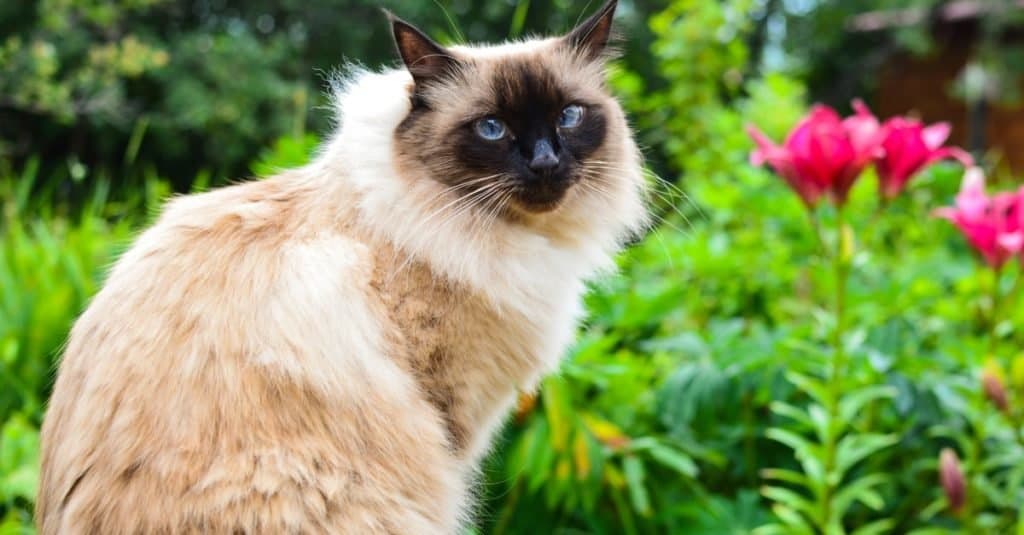
Siamese cats initially came from Thailand, and Balinese cats found their beginnings in the United States as Siamese cats that had longer hair because of a genetic mutation.
©Fazlyeva Kamilla/Shutterstock.com
No one knows the exact origin of the Siamese cat, but it is one of the most ancient feline breeds that exists. In fact, there appears to be a description of this very cat in the Thai manuscript “Tamra Maew.” Because this manuscript was written sometime between the 14th and 18th centuries, we have evidence that the Siamese cat was around at that time.
We do know that the Siamese cat initially came from Thailand, then called Siam. People would actually refer to these cats as Royal Cats from Siam, as these cats were seen to be highly desirable by royalty. These cats were originally brought to England in the late 1800s.
Balinese cats originated in the United States. In 1928, an American couple registered their Siamese cats that were born with long hair — a result of a genetic mutation. In the 1950s and 1960s, people started breeding these long-haired Siamese cats. Then, in 1970, the Cat Fancier’s Association acknowledged the Balinese cat as its own separate breed.
While there are other subtle differences, the Balinese cat is essentially a Siamese cat with longer hair.
Balinese vs. Siamese Cat: Behavior

Balinese and Siamese cats are very similar in terms of personality, although Balinese cats may be a little bit quieter and more likely to be friendly with everyone.
©Mercedes Fittipaldi/Shutterstock.com
The Balinese and Siamese cats are very similar in terms of personality and behavior. They are both very friendly, affectionate, and playful. Neither of them like being alone. Because of this, if you have one of them and are often away from your home, it would be a good idea to get another cat.
Both of these cats require quite a bit of mental stimulation. If they are bored and left alone for long periods of time, they are somewhat likely to become destructive around your home.
Both of these cats are very vocal as well. Their meows are very loud compared to other breeds, so they’re not right for anyone who wants a quiet cat. However, many owners say Balinese cats have softer tones to their voices when compared to the Siamese cat.
While the Siamese cat is known to be loving and gentle, they can also be somewhat aloof, especially around strangers. They are more likely to bond strongly to one person, while the Balinese cat is more likely to be friendly towards everyone. If you want a cat that is more lively and friendly, you might want to choose the Balinese cat.
The Siamese cat is also somewhat more active and excitable than the Balinese cat.
Balinese vs. Siamese Cat: Health
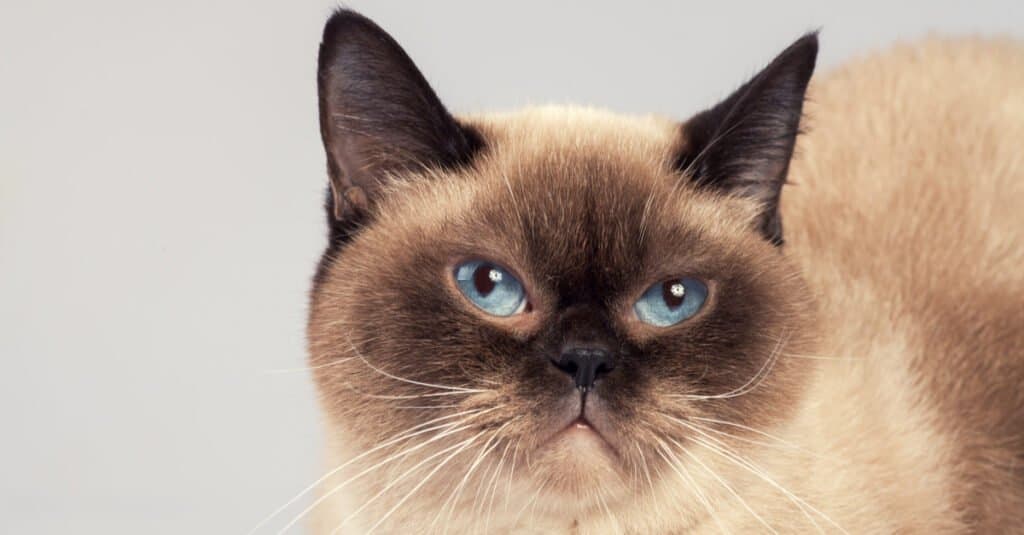
Balinese and Siamese cats tend to have similar health issues, although Old-Style Siamese cats typically don’t have these issues. Old-Style Siamese cats, as seen in this picture, have apple-shaped heads.
©vvvita/Shutterstock.com
Siamese cats are fairly healthy, but they are prone to certain medical conditions. These include liver disease, heart disease, lymphoma, hyperesthesia syndrome, asthma, and gum disease. They are also at risk for progressive retinal atrophy.
Balinese cats have similar health issues, including eye problems such as progressive retinal atrophy and glaucoma. They can suffer from neurological problems, such as hyperesthesia syndrome and nystagmus. These cats are also at risk for asthma and other respiratory issues, in addition to liver disease and heart disease.
However, there are certain Siamese cats that tend to be healthier. the ones with apple-shaped heads, also known as Thai cats or “Old-Style Siamese cats,” don’t tend to have any of the above issues. It’s the ones that are more wedge-shaped that tend to have these health problems.
Regardless of your cat’s breed, you should make sure to take him or her to the vet regularly, so that you can be sure that he or she stays healthy as long as possible.
Balinese vs. Siamese Cat: Lifespan
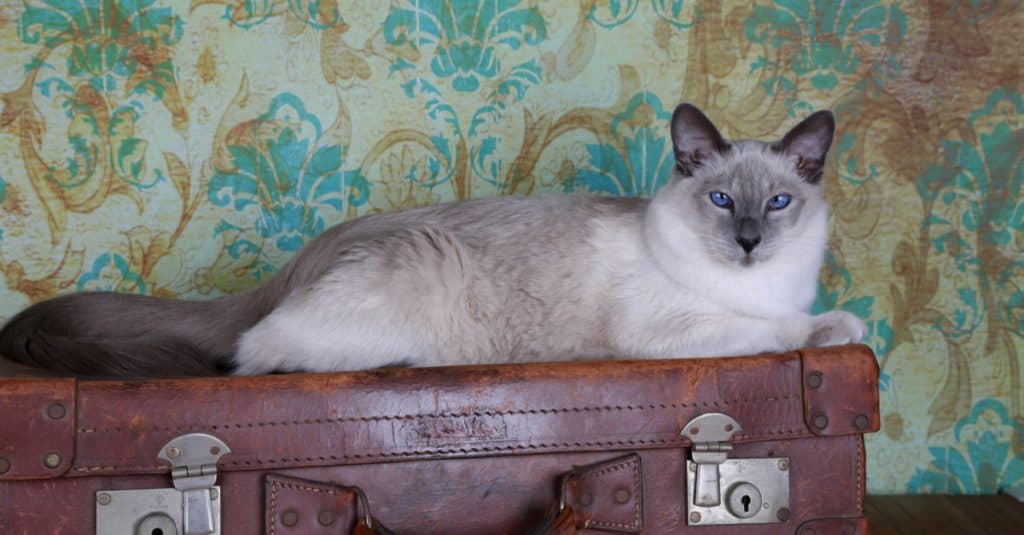
On average, the Siamese cat has a longer lifespan than the Balinese cat (like the cat in this picture), likely because Thai cats are healthier with more longevity and are considered to be part of the Siamese cat group.
©Jenni Ferreira/Shutterstock.com
One significant distinction between the Balinese and Siamese cats involves their respective lifespans. Siamese cats generally have longer lifespans than Balinese cats, with the former having a lifespan of 12 to 20 years and the latter having a lifespan of 10 to 16 years.
The reason for this difference is likely that Thai cats, which tend to be healthier and live longer, are included in the “Siamese cat” category when figuring out average lifespans.
Up Next:
- Types of Siamese Cats
- Birman Cat vs Siamese Cat: What Are The Differences?
- The Oldest Living Cat (Still Alive Today!)
The photo featured at the top of this post is ©
Sources
- The International Maew Boran Association, Available here: http://www.timba.org/tamra-maew.html
Thank you for reading! Have some feedback for us? Contact the AZ Animals editorial team.






